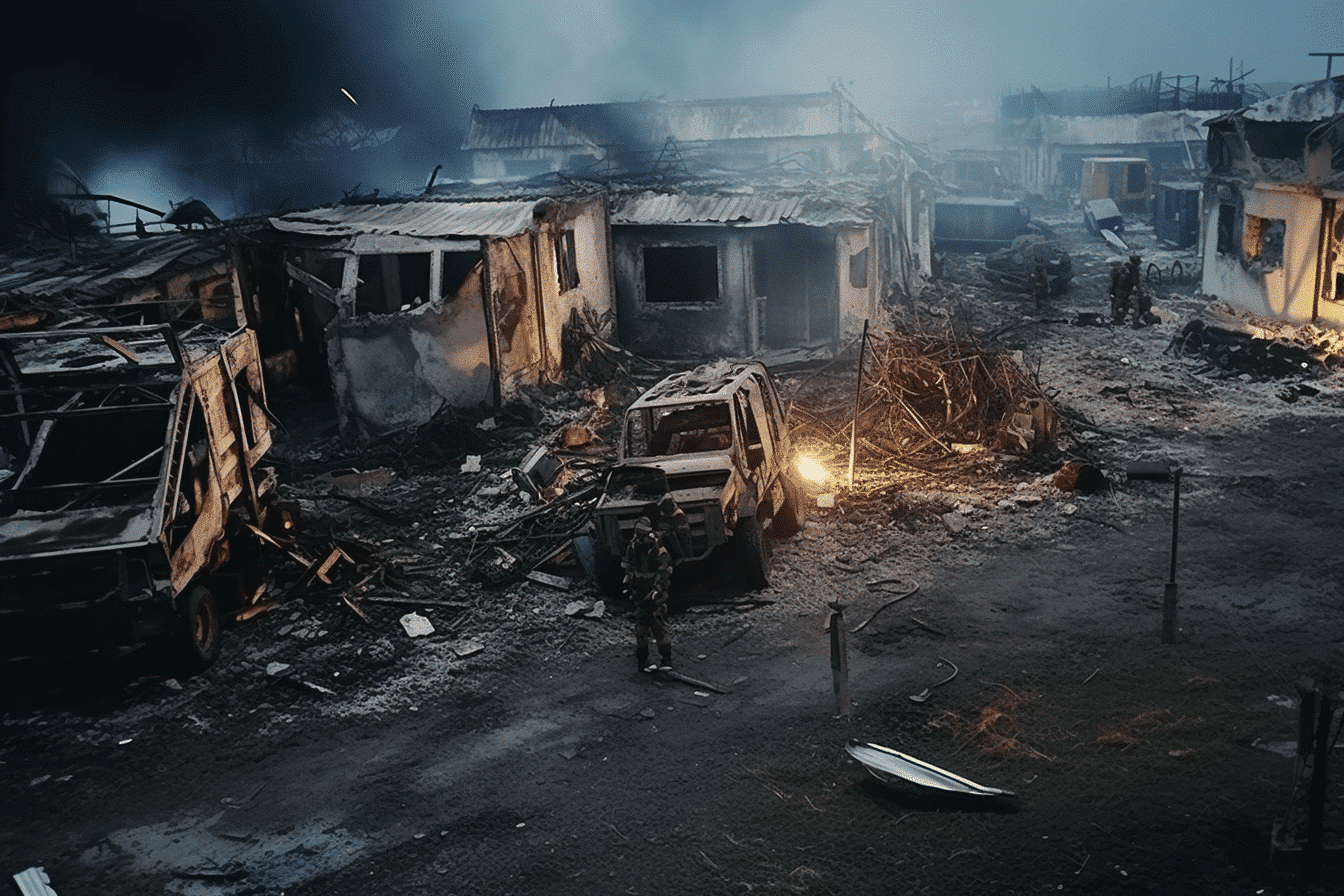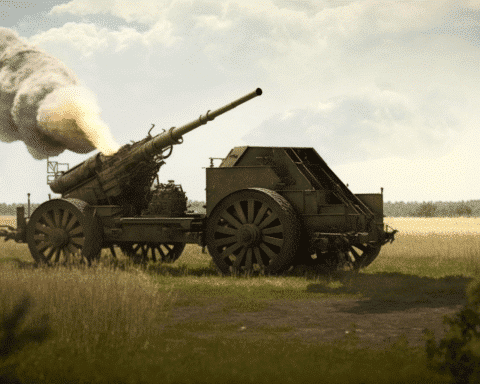Russia’s drones targeted Odesa’s Black Sea region, leading to significant damage, including warehouse destruction, dozens of trucks set ablaze, and injuries to two drivers. According to officials, this attack caused an immediate halt in the ferry services connecting Romania and Ukraine.
Footage from the Romanian side of the Danube captured a flurry of Ukrainian anti-aircraft shots piercing the darkness, culminating in two fiery explosions at the port. The aftermath showed trucks engulfed in flames.
Romanian authorities confirmed that, as a safety measure, ferries were stationed on Romania’s Danube side in Isaccea due to the escalating situation in Ukraine. As an alternative, traffic was channelled through Galati, a Romanian town further up the river.
Out of 38 drones Russia deployed, Ukraine’s air defence reported intercepting 26.
The drone offensive on Izmail in the Odesa region aligns with Russia’s broader strategy of crippling Ukraine’s grain export potential. Earlier this week, such assaults resulted in two casualties at an Odesa grain storage facility and significant damage to an unoccupied hotel.
Following Russia’s withdrawal from a U.N. grain agreement, strikes on cities like Izmail in southern Odesa have become commonplace. The cities on the Danube have been particularly affected, given their importance to Ukraine’s export initiatives.
The recent spate of attacks has left a toll: nine civilians dead and 15 injured in the last day, stated the Ukrainian presidential office. This comes as Ukraine forges ahead with its gradual counteroffensive.
Both parties have been tight-lipped about their casualties. However, the intensity of the conflict has left its mark, particularly on the small towns at the heart of the conflict.
Recent drone footage from Klishchiivka near Bakhmut paints a bleak picture. The village is reduced to ruins, with remnants of Russian military hardware scattered around. Most of the infrastructure is destroyed, with few structures still standing in a village that used to house close to 400 residents.
Ukraine regained control of Klishchiivka on September 17, following extensive combat, and soon after reclaimed the neighbouring town of Andriivka. These towns, though small, hold strategic significance. They give Ukrainians an advantageous advantage over the Russian-held town of Bakhmut and better insights into Russian logistics.
Despite Ukraine’s claims of killing Adm. Viktor Sokolov, a high-ranking Russian naval officer, in a missile strike, Sokolov was spotted in an online conference with other officials.
The Kremlin responded to reports of U.S.-made Abrams tanks arriving in Ukraine and potential shipments of long-range ATACMS missiles. Kremlin spokesperson Dmitry Peskov downplayed their significance, while Dmitry Medvedev warned of pushing NATO into confrontation with Russia.
As tensions escalate and the international community watches closely, the stakes in the Ukrainian-Russian conflict have never been higher. The disruption of essential services, the impact on global grain markets, and the involvement of international military hardware signal a deepening crisis. While dealing blows to each other, both sides also suffer significant losses. The world hopes for a resolution that minimizes further bloodshed and restores peace and stability in the region.




